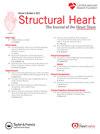Concept, Design, and Preclinical Testing of a Remote-Control Robotic System for Transesophageal Echocardiography
IF 1.4
Q3 CARDIAC & CARDIOVASCULAR SYSTEMS
引用次数: 0
Abstract
Background
Interventional echocardiography (IE) plays a critical role in guiding structural heart interventions. IE specialists face challenges including high radiation exposure and unfavorable ergonomics. To address these issues, a novel remote-control robotic (RCR) system for transesophageal echocardiography (TEE) control has been developed. This study aims to describe the novel RCR system and to assess its performance in bench tests and in vitro models in terms of functionality, image quality, and reproducibility.
Methods
Bench testing and in vitro testing were performed using the RCR system. All tests were performed using the GE 6VT-D TEE probe and the GE Vivid E95.
Results
Key findings include proof of concept through bench testing, remote control of all five degrees of freedom of the TEE probe, and reliable, fast, and accurate reproducibility using automated navigation. The ROB’E Base is securely attached to the operating table, optimizing the footprint in the operating room. The ROB’E Guide accurately performs the forward and backward motion of the flexible portion of the TEE probe, stabilizing the achieved positions and preventing twisting during rotation. The ROB'E RCR system can store and reproduce TEE probe positions and has demonstrated reliable and accurate automated reproducibility in both bench and in vitro tests.
Conclusions
The ROB'E RCR system for TEE overcomes the limitations of conventional IE by using a RCR approach that eliminates the need for the echocardiographer to be physically present in the operating room. Thus, it significantly reduces radiation exposure and demonstrates its capabilities to improve image quality, reproducibility, and overall safety in IE.
经食道超声心动图远程控制机器人系统的概念、设计和临床前测试
背景介入超声心动图(IE)在指导心脏结构性介入治疗方面发挥着至关重要的作用。介入超声心动图专家面临的挑战包括高辐射暴露和不利的人体工程学设计。为了解决这些问题,我们开发了一种用于经食道超声心动图(TEE)控制的新型遥控机器人(RCR)系统。本研究旨在描述新型 RCR 系统,并从功能、图像质量和可重复性方面评估其在台架试验和体外模型中的性能。所有测试均使用通用电气 6VT-D TEE 探头和通用电气 Vivid E95 进行。结果主要发现包括通过台架测试验证了概念,远程控制 TEE 探头的所有五个自由度,以及使用自动导航实现可靠、快速和准确的再现性。ROB'E 底座牢牢固定在手术台上,优化了手术室的占地面积。ROB'E 导轨可准确执行 TEE 探头柔性部分的前后运动,稳定已实现的位置并防止旋转过程中发生扭曲。用于 TEE 的 ROB'E RCR 系统可以存储和重现 TEE 探头的位置,并在工作台和体外测试中证明了其可靠、准确的自动重现性。结论用于 TEE 的 ROB'E RCR 系统克服了传统 IE 的局限性,它采用 RCR 方法,无需超声心动图医师亲临手术室。因此,它大大降低了辐射暴露,并证明了其在 IE 中提高图像质量、可重复性和整体安全性的能力。
本文章由计算机程序翻译,如有差异,请以英文原文为准。
求助全文
约1分钟内获得全文
求助全文
来源期刊

Structural Heart
Medicine-Cardiology and Cardiovascular Medicine
CiteScore
1.60
自引率
0.00%
发文量
81
 求助内容:
求助内容: 应助结果提醒方式:
应助结果提醒方式:


